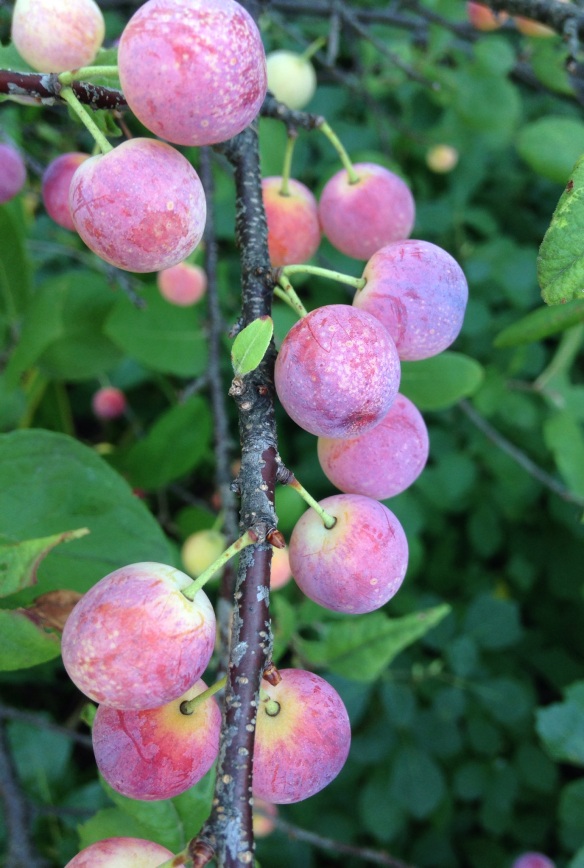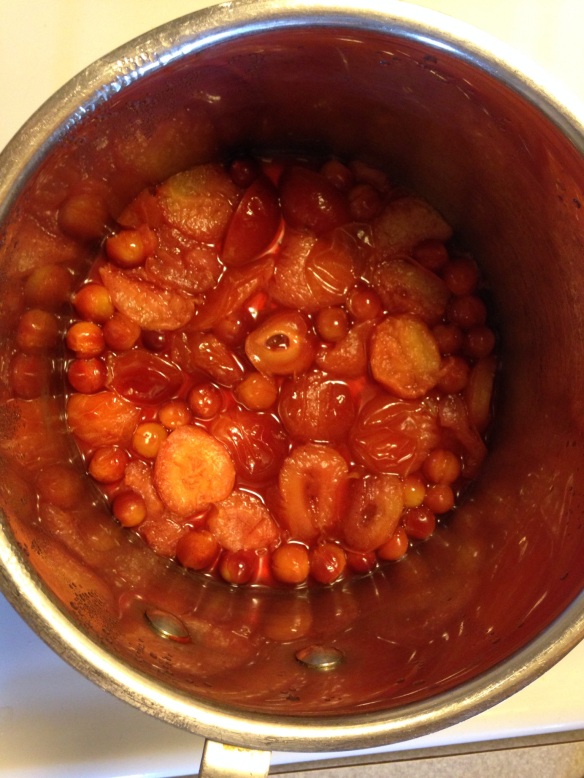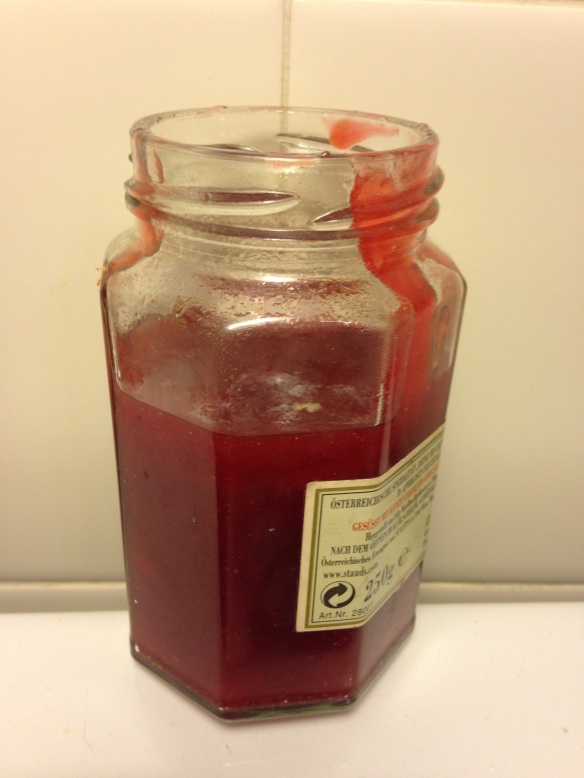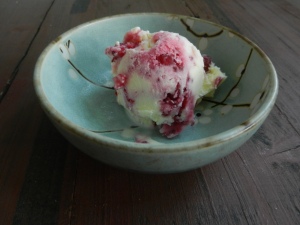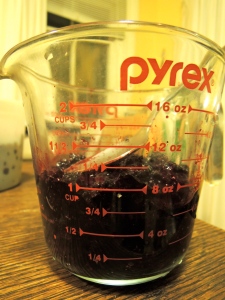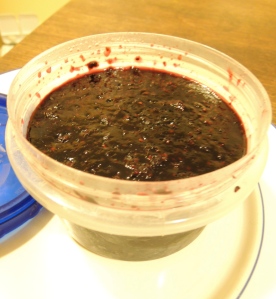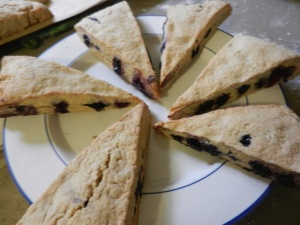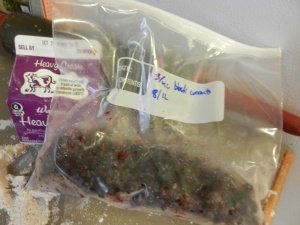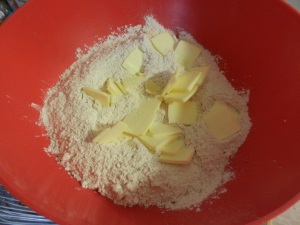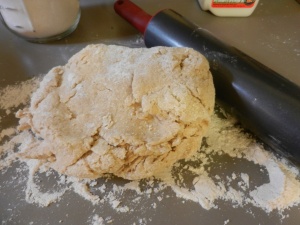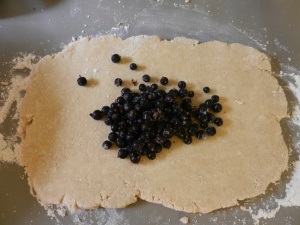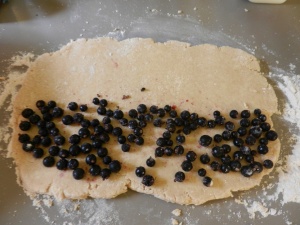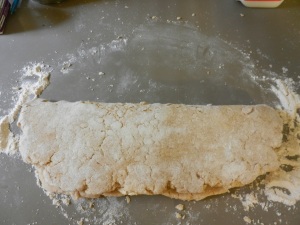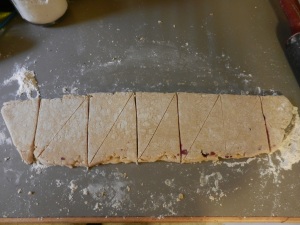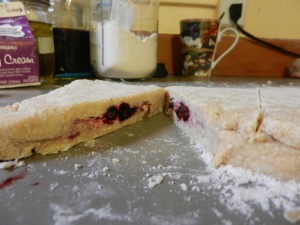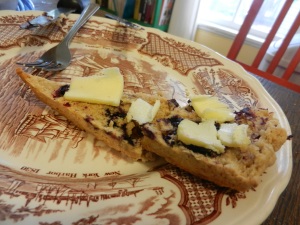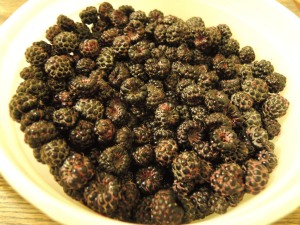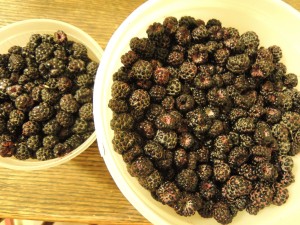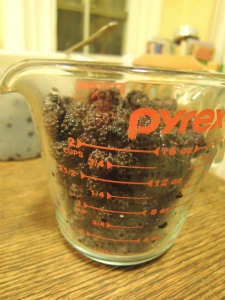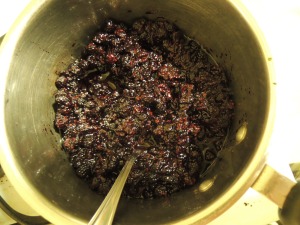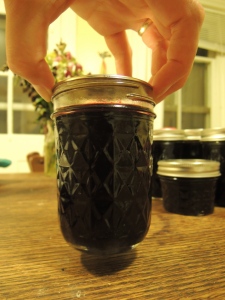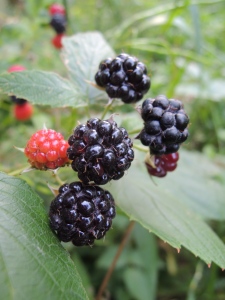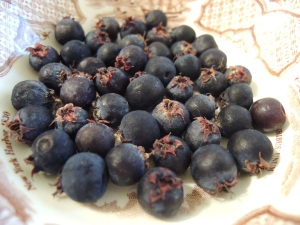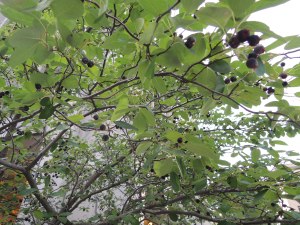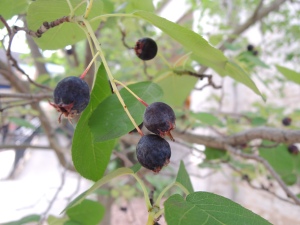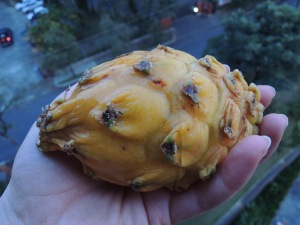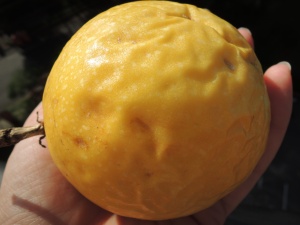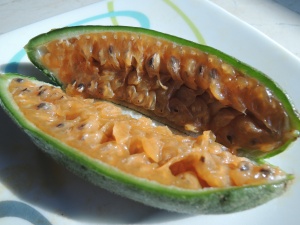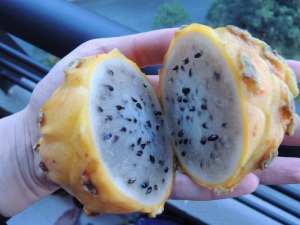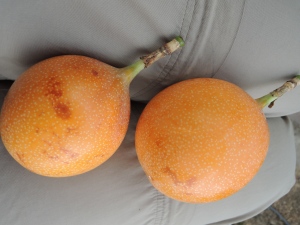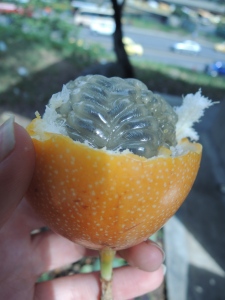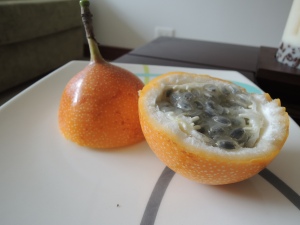I’ve moved! I’m no longer picking and jamming in the Finger Lakes of New York, but in Somerville, MA. I feel super lucky in my new neighborhood, because after only 9 days here, I’ve already made my first batch of local jam.
A really tiny batch of jam, not even filling an 8-ounce jar. But still. If you like jams with a good punch of tartness, this is the jam for you.
The plums themselves are tiny too–completely round and the size of marbles or Everlasting Gobstoppers. They’re beach plums, found up and down the northeast US near the sea. If you live in the UK or the northwest US, you may find similarly small cherry plums growing wild. I was exuberantly excited to find them here, because I’d once picked beach plums on Martha’s Vineyard and made 8 ounces of the best tart jam I can remember out of them.
These ones are on the unripe side–completely ripe ones will be dark purple–but that’s fine for jam. The beach plums are the small round plums in the pictures below.
So even though it’s a little ridiculous to make such a small batch of jam, here’s how. It’ll set up very fast, because tart plums are full of pectin and because it’s such a small batch. Mine turned out a gorgeous ruby red color because all the plums I used were red.
If you don’t have beach plums, use the tartest plums you can get.
A Tiny Batch of Tiny Plum Jam
Makes less than 8 ounces
Ingredients:
8 ounces small plums (unpitted)
1/4 cup water
About 1/2 cup sugar
1. Put a small plate in the freezer for later. Wash the plums and put them in a pot with the water. For beach plums, put them in whole. For larger plums, slice them into halves or quarters and remove the pits.
2. Simmer gently, covered, for about 15 minutes or until the plums are totally soft and their skin is wrinkled.
3. Turn off the heat, let the plums cool some, and then remove the pits. You can do this using a food mill, or by pressing the flesh/juice through a colander, but I found with a batch this small that it was easiest just to pick the pits out with my fingers. (Bonus: you feel like a kindergartener finger painting!)
4. Measure the amount of flesh/juice. I got 3/4 cup. Put it back into the pot.
5. For each cup of flesh/juice, add 3/4 cup sugar. So, if you get 3/4 cup flesh like I did, add 1/2 cup sugar.
6. Heat the jam until bubbles form (this won’t take much heat because it’s such a small volume). Cook, stirring, until the jam passes the wrinkle test when a small dab is put on the plate in the freezer.
7. Put the jam in a clean jar and store in the fridge.
